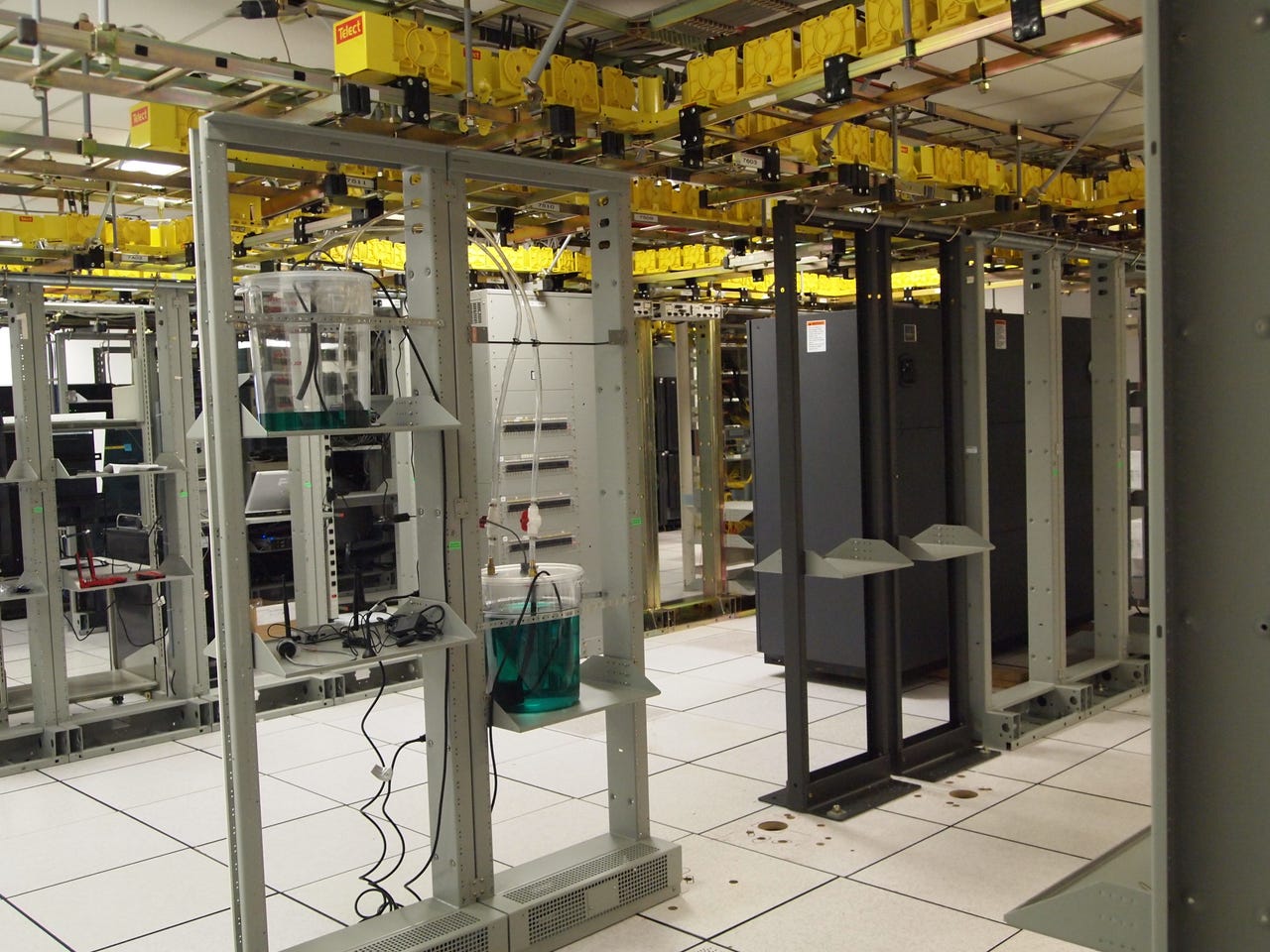A Tour of Sprint's M2M Collaboration Center


Sprint opened up its laboratories last autumn, and the labs are open to companies that want to develop solutions in this space. Sprint technicians are also on hand to help write up tests and plans in a scientific fashion.
Ecotality, one of Sprint's M2M partners, has developed both public and residential electric vehicle charging stations that deliver data using Sprint's network. Seen here is a copy of a model that would be seen in residential garages.
This screenshot on Ecotality's charging station reflects the average stats produced by a Nissan Leaf electric car. Users can get real-time information on this display without a smarpthone involved, and they can analyze their utility rates, peak charging times and more.
Smart meters are becoming of the more well-known and basic M2M solutions available to residences today. Like this SmartSynch meter than runs on Sprint's 2G network, home owners can check real-time info on their meters without needing an electrician to visit the house. The goal is simple: save time and money.
This project, a virtual tank monitoring solution, is still in development. The purpose behind this M2M device is to monitor tanks (filled with either liquids or solids) for various factors such as temperature and depth. Users can also send automatic alerts and commands to the tanks, including automatic content transfers between tanks when one might be too low and/or unsustainable.
Businesses that could put such a project to use include farms and oil companies.
Pharmacies are also businesses that could benefit from M2M solutions as these projects are not supposed to tap into the local infrastructure. All of the M2M device's data and workload remains on Sprint's network, so that should appease most IT departments.
The project seen in this photo is a QR code scanner, which does the obvious: scans codes on prescription bottles and then displays information about the drug in the language of the user.
Every wish you could command your refrigerator without moving? Now you can...at least to some extent.
The Sprint engineering team developed a prototype using MultiTech CDP (Cellular Development Platform) and an off-the-shelf fridge, which can send real-time information about stats such as the internal temperature level and whether or not the tap is loaded.
Additionally, a camera and a GPS module have been installed so that the owners can keep track of who is using this fridge and where it might have gone if it were to suddenly roll out of the designated geo-fence.
Digital signage is one of the more obvious M2M solutions that we could be seeing much more of in the near future.
This interactive panel hosts a webcam, which automatically analyzes the gender and age of the viewers using facial recognition technology. Naturally, that's not going to be perfect all the time, but Sprint reps assured that its aggregate level is rather precise.
Thus, not only can the display send back real-time info about who is watching the displayed advertisement, but also whether or not the viewers were paying close attention and for how long.
Digital signage can also be manipulated in different ways, especially when it comes to retail. In this example, consumers can speak with customer service reps instantly using the M2M-enabled panel. This could really help in mobile provider brick-and-mortar stores where the norm is usually just to sign up on a piece of paper and wait for your name to be called.
Given that these displays are HD and require high-quality graphics and speed, digital signage typically runs on Sprint's 4G network.
Although it's a fairly obvious piece of machinery in the wild, it might be hard to tell what it does. This funny looking robot that looks more like a street lamp is actually a camera named Sky Cop. Examples of what it could be used for include monitoring and snapping photos from high-rise buildings down to the street level, parking lots, car dealerships and similar areas that might need additional surveillance.
M2M technology is starting to take off on both enterprise and consumer levels because of the variety of form factors that these modules can have. Even the tiniest one in the middle, which runs on Sprint's 2G network, hosts a micro USB port that can be implemented in mobile gadgets that don't require smartphones for information transfers.
One example of smaller mobile gadgets using M2M modules is the BodyMedia arm strap, which is situated in tne center back of this photo. This device, which went on sale a few months ago, can transfer data (i.e. temperature, pedometer tracking, etc.) instantly to a web portal for analysis.
M2M technology is being implemented more frequently into devices for public safety, such as this handheld device pictured here. Already being used by some police departments (although Sprint couldn't disclose any specifics), this gadget by Intermec is enabled with a wireless module for scanning ID cards, credit cards, fingerprints and more.
Additionally, it can be paired with a mobile printer to print out any necessary information (or maybe speeding/parking tickets) instantly.
There are many of us who have left the house wondering if we left the coffee pot and/or the curling iron turned on by accident. Such worries could be put aside with M2M technology.
This smart plug, developed by Digi International, not only keeps stats on usage, but it can also validate commands for turning the M2M-enabled surge protector on and off from anywhere that the user can log into the web portal.
These little orbs, which measure roughly about two to three inches in diameter, were developed by AnyDATA to serve as personal trackers. You can plop one into your child's backpack to keep tabs on where they are as well as set up a geo-fence perimeter. If the person with the tracker passes outside of the geo
This isn't a pager from the late 1990s but rather a tracking device that is being touted for Alzheimer's Disease patients. Using CMDA connectivity, this OmniLink-developed mobile device can set up a geo-fence that monitors where patients go and automatically sends alerts back to those who need to be tracking their patients (i.e. doctors, nurses, caretakers, family members) in case the patient exits that perimeter.
Most of us have seen the commerical where a person falls in the bathroom, can't get up and pushes a button to call for help. Well, what if the person is unable to reach that button or unconscious altogether?
This M2M-enabled wrist band built by Reflection Solutions has a built-in accelerometer that can detect when the person wearing the device has fallen and can automatically send to caretakers, family members or anyone else designated to receive the alert using Zigbee (from Digi International) relayed on Sprint's 3G network.
This might look like a typical vending machines, but even these old-school retail apparatuses are getting a makeover with M2M technology. For example, not only can patrons use their credit cards on many vending machines (such as this one) these days, but vendors can automatically track what items need to be on the truck before replenishing machines.
Another digital signage solution could reduce costs significantly for restaurants, especially fast food chains. Those old stationary, analog signs actually cost quite a bit to install and update, but managers can update prices, deals, calorie counts and more by just using a web portal that automatically updates the designated display.